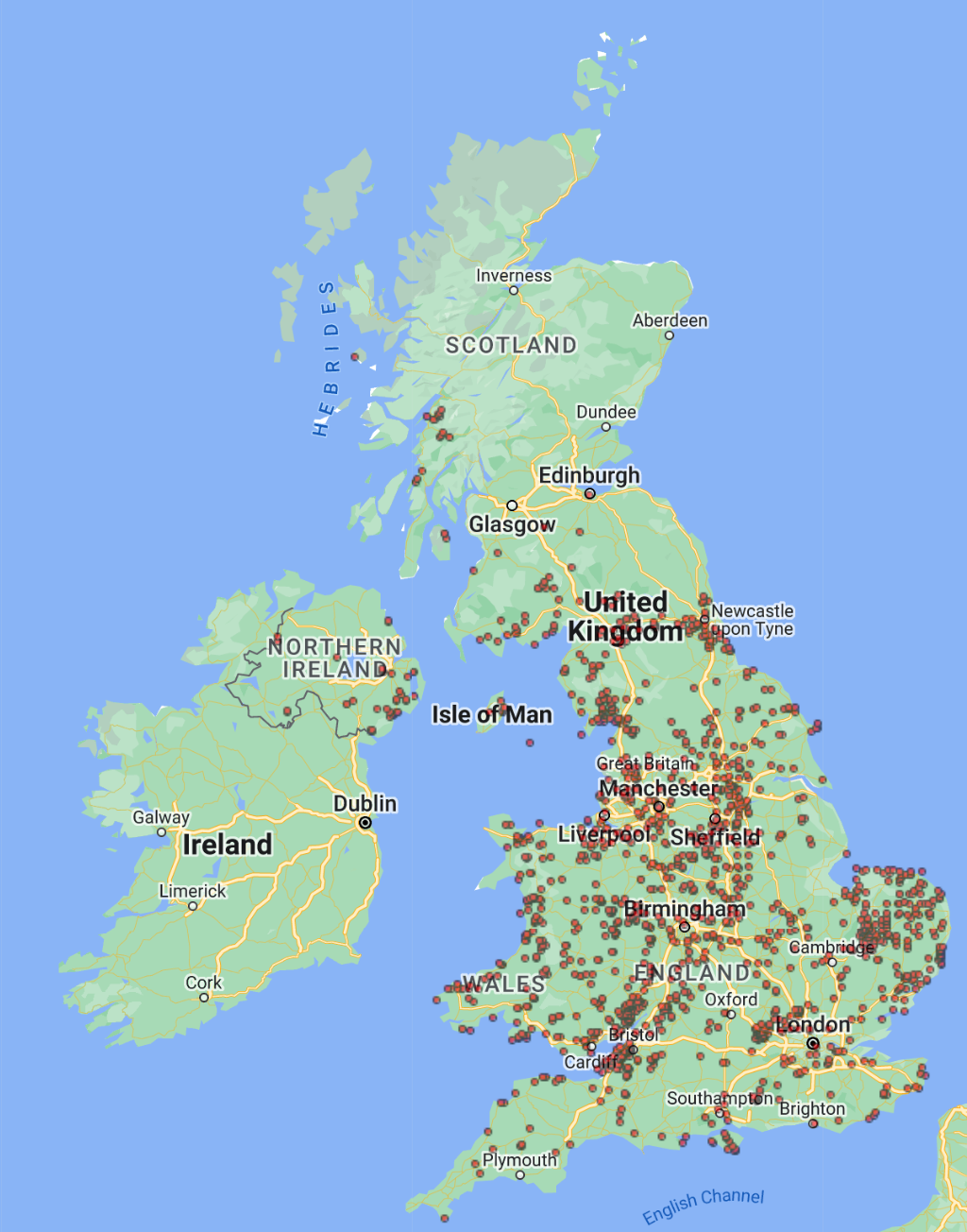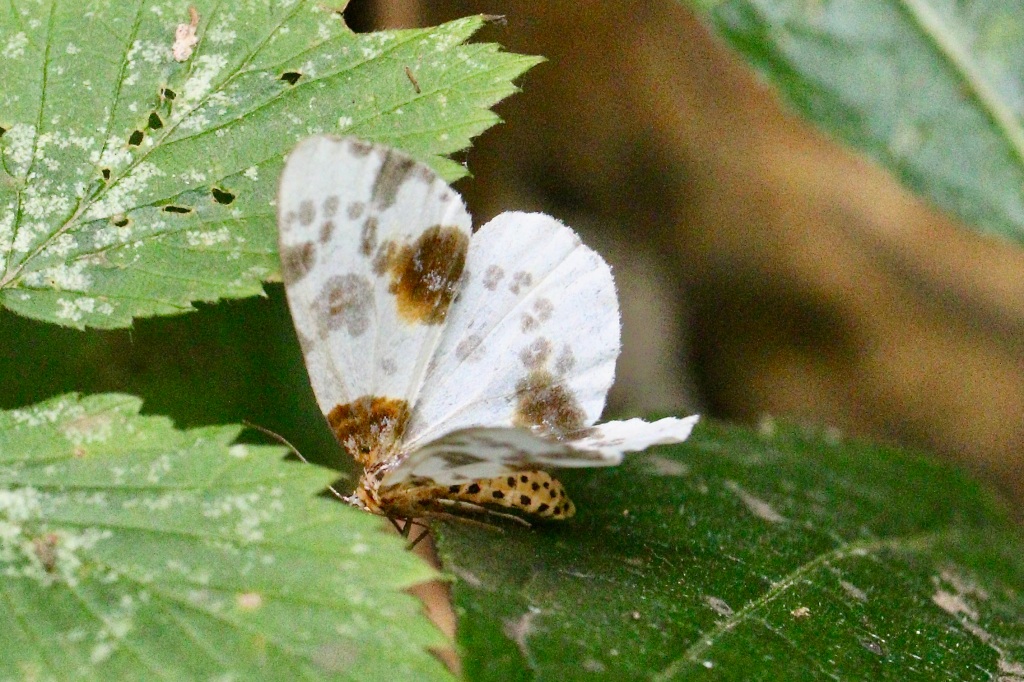I’ve only come across the Clouded Magpie – Abraxes sylvata once, and this was in August this year during a woodland walk between Chepstow and Tintern. It’s easy to see how this beautiful moth got its name with the markings on the creamy white wings looking just like dark clouds. The cryptic brown markings on the white-creamy background of the wings have been likened to a bird dropping when the adults are at rest on the foliage of trees. The ground colour of the wing is predominantly white with brownish patches scattered across all wings. There can be variation between individuals in the size and density of the markings. There are smaller areas of pale grey on the fore and hind wings. It’s not a large moth, but the creamy flash of the the wings as it flies is enough in the dark undergrowth to make it easy to be seen, with the full wing only 18 to 20 mm across (1). Whenever I see anything for the first time I had to admit a certain amount of boyhood excitement. I could not fail delight in seeing such a beautiful almost mono-coloured moth in the depths of a deep woodland in late summer.

The Clouded Magpie belies the common belief that all moths fly by night. I may have disturbed this one from it’s resting place as we was tramped through the woods, but the books all say that it is not unusual to find them flying during the day. There is one generation throughout the year from late May through until July, but the unseasonable weather this year, they have allowed the generation to explore and it’s flight period. The pupa when ready overwinters underground ready to start the next generation the following year. The larvae can play host to the endoparasite Senometopia intermedia, a Tachinid fly (3).

A member of the Geometridae family of moths Abraxas sylvata that was named by Giovanni Antonio Scopoli in 1763 (4). So what’s in the name, the common name seems to my mind obvious but as usually the bionic is less so. Especially if, like me you have a non-resistant grasp of latin or greek. But it seems that the genus name abraxas is a Coptic word used to express the number of days in a year, which in this case has no entomological meaning. Sylvata is easier and is Latin for woodland, clearly referring to its preferred habitat.
Giovanni Antonio Scopoli (1723-1788) was an Italian physician who also had an interest in zoology, and was the author of a number of a number of books, one of which was Flora Carniolica, describing the plants of Carbolic a region of present day Slovenia.
1: Waring,P. Townsend,M. and Lewington,R. (2011) Field Guide to the Moths of Great Britain and Ireland (2nd ed) British Wildlife Publishing.
2: Clouded Magpie NBN Atlas https://spatial.nbnatlas.org/?q=lsid%3ANBNSYS0000005976&fq=occurrence_status%3Apresent. Accessed 2022-11-28.
3: Abrades salvata. https://www.bioinfo.org.uk/html/Abraxas_sylvata.htm. Accessed 5 dec 2022.
4: Giovanni Antonio Scopoli. Wikipedia. https://en.wikipedia.org/wiki/Giovanni_Antonio_Scopoli. Accessed 05 Dec 2022.


Leave a comment